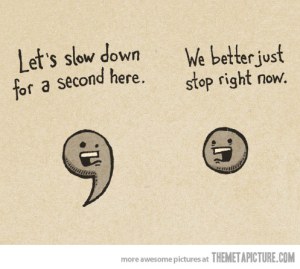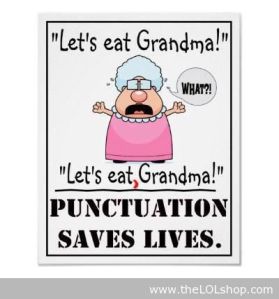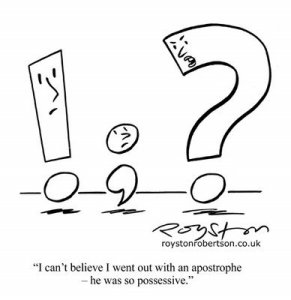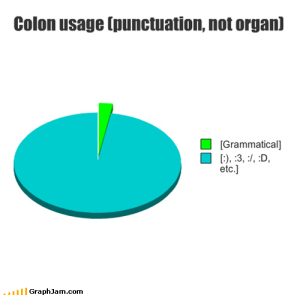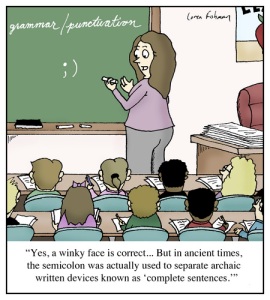Ensuring I have properly punctuated my work is by far my least favourite part of writing, and it is something we spend a lot of time working on here at the centre. So, here are some tips that I like to use when trying to figure out if I have used the right punctuation, mixed with a bit of humour (or attempted humour at least).
We’ll start easy.
The period
It is used at the end of a complete declarative period and is often used after an abbreviation. It indicates a full stop. Did you know that a prisoner’s favorite punctuation mark is the period? It marks the end of his sentence.
http://cdn.themetapicture.com/media/funny-comma-period-punctuation.jpg
The comma
These tiny things let your reader know when to pause in a sentence. They are used after conjunctive adverbs or introductory phrases, to indicate that a clause is not essential to a statement, when there are three or more items in a list and to isolate who is doing the speaking when there is a quotation. Watch out for comma splices! This happens when two independent clauses are joined by a comma.
http://www.thelolshop.com/wp-content /uploads/2012/07/20120717-210332.jpg
The apostrophe
The apostrophe is used to show possession or ownership. It also is used to indicate when a letter or number has been left out (a contraction).
http://cdnpix.com/show/imgs/4f9dff89e2d02c71cb15bca660783771.jpg
The colon
Colons do many things. Firstly, the link closely related complete sentences by indicating that what follows the colon will expand on what had just been stated. You can also use a colon to link a main clause with an appositive (a noun or noun phrase that renames the noun preceding it). Finally, colons are most often used when you present a list. But, this should only be done when it is being used to join a list to an independent clause (a sentence that could stand by itself).
The semicolon
The semicolon is one confusing piece of punctuation. Two sentences can be connected by a semicolon when their meaning is connected. The second sentence often adds details, further explanation, or points out a contrast. When doing this ensure that there is no coordinating junction (and, but, for, nor, so, yet, etc.). You can also follow the semicolon with a transitional expression (however, therefore, etc.). The second way that a semicolon can be used is in place of a comma to separate major items in a list where at least one of the items contains a comma. Basically, this will just simplify your list for the reader.
http://www.toonpool.com/user/67706/files/using_the_semicolon_1828435.jpg
Hopefully these brief descriptions will be able to help you figure out how to properly punctuate your work. If you ever need a refresher feel free to either book an appointment with us or check out our online handouts!
Enjoy your semester,
Shannon
Senior Peer Mentor

